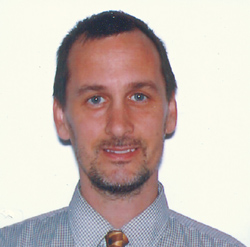
2 die as planes crash at field. Eddie Schneider, who flew at 15, is killed when his craft and Navy trainer collide. Passenger also victim US ship is landed safely at Floyd Bennett Airport despite damaged wings.
Eddie Schneider, who started flying when he was 15 years old and set a junior transcontinental record in 1930 at the age of 18, was killed with a student passenger yesterday when their light training plane was in collision with a Naval Reserve plane, also on a training flight, just west of Floyd Bennett Field. The Naval Reserve plane landed safely at the field but Schneider's plane went into a spin, tore off a wing, and crashed into Deep Creek, a few hundred feet across Flatbush Avenue from the city airport in Brooklyn. Both Schneider and his passenger, George W. Herzog, 37, a contractor living at 535 North Second Street, New Hyde Park, Long Island, were dead when their bodies were pulled from the submerged wreckage. At the Naval Reserve base at Floyd Bennett Field it was said the Navy biplane, a Stearman trainer, had been piloted by Ensign Kenneth A, Kuehner, 25, of Minister, Ohio, with Second Class Seaman Frank Newcomer, of Rochester, Ohio, as a passenger. The right lower wing of the naval plane, the left upper wing and the propeller were damaged. The third accident, in two weeks in which a Naval Reserve plane based at Floyd Bennett Field was involved, it brought the comment from Dock Commissioner John McKenzie that it was the sort of thing to be expected ?where there are training: flights at an airport.? ?That is the point that Mayor La Guardia has been making". Mr. McKenzie said, "in his efforts to keep training away from commercial fields" Police said the witnesses to the accident were agreed that the Naval Reserve plane was crossing above the plane piloted by Schneider, a high-wing Piper Tandem Cub monoplane, as the two approached the field for a landing 600 feet above Deep Creek, Schneider's plane went into a tight spin as the two planes disengaged after colliding, the witnesses said, appeared to straighten out and then plummeted into the water as its left wing tore loose. Many would-be rescuers were on the scene within, a few moments, including police, Coast Guardsmen and fliers from Floyd Bennett Field. The bodies of the two men were pulled quickly from the wreckage and onto a half-submerged barge near which the plane fell, but it appeared both had been killed when the plane hit the water. Joseph Hanley, first assistant district attorney of Kings County, opened an investigation at the scene and a naval board of inquiry, headed by Commander H. R. Bowes, was ordered convened by the Navy Department in Washington. Schneider lived at 32-50 Seventy-third Street, Jackson Heights, Queens. He leaves a widow. Herzog leaves a widow and two children. He had been flying some time, holding a limited commercial pilot's license, but had enrolled for a refresher course with the Archie Baxter Flying Service, Inc., owner of the plane. Schneider was an instructor at the school. The bodies of the two men were taken to Floyd Bennett Field pending funeral arrangements. Schneider first gained public attention as a flier in the Summer of 1930 when he announced plans for an attempt to break the junior transcontinental east-west record of 34 hours 57 minutes set the year before by 15-year-old Frank Goldsborough, who was later killed. Taking off from Westfield, New Jersey, August 14, he landed at Los Angeles four days later with a new elapsed time mark of 29 hours 55 minutes. He then flew the west-east passage in 27 hours 19 minutes to better Goldsborough's time for that flight and also for the round trip. He continued active in aviation, competing in National Air Tours, races, and as an instructor. He went to Spain in 1936 to fly for the Loyalists, but returned the next year without having collected the $1,500-a-month pay that was promised him. He and other American fliers were looked on with suspicion by many of the Loyalists, he said, because they were not Communists. Schneider had a narrow escape from death May 15, 1935, when the engine of his training plane failed and it fell into Newark Bay with him and a student passenger shortly after they had taken off from Jersey City Airport, of which he then was manager. Schneider's father, Emil, a Jersey City banker, financed his son's transcontinental flight after having first opposed his efforts to become a flier. The boy had quit school at 15 and worked as a mechanic at Roosevelt Field, Mineola, Long Island, and at the Westfield airport to secure money for flying lessons. He was the youngest licensed flier in the country when he received a limited commercial license shortly after his eighteenth birthday in 1929.
Source: New York Times, New York, December 24, 1940. Transcribed by Richard Arthur Norton (1958- ) on February 10, 2005.


